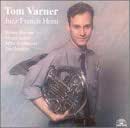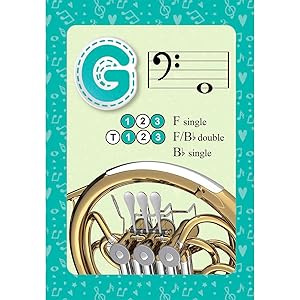The marching French horn, a distinctive brass instrument known for its rich, warm sound, plays a crucial role in the overall fabric of a marching band’s field show. This article delves into the importance of the marching French horn, its unique characteristics, its contributions to musical arrangements, and its impact on the visual and emotional storytelling of a performance. We will also explore case studies of notable field shows and examine how the French horn enhances both musical and visual elements on the field.
The Unique Characteristics of the Marching French Horn

Unlike the more commonly seen trumpet or trombone in marching bands, the French horn brings a unique set of qualities that enrich the ensemble’s sound. Here are some key characteristics:
- Sound Quality: The French horn is known for its mellower and more blended sound, which can cut through the ensemble without overpowering other instruments.
- Range: It has a wide range, allowing it to play both harmonic and melodic lines effectively.
- Articulation: The instrument’s ability to produce soft, lyrical passages alongside powerful, bold phrases adds depth to musical arrangements.
The Role of the Marching French Horn in Musical Arrangements

In a marching band field show, the arrangement is a critical element that determines how well the ensemble performs. The French horn contributes significantly to these arrangements in several ways:
- Harmonic Foundation: The French horn often provides harmonic support, filling in chords that enhance the overall sound texture. Its unique timbre complements other brass and woodwind instruments, creating a fuller sound.
- Melodic Lines: In many arrangements, the French horn carries the melody during certain sections, showcasing its lyrical capabilities. This creates a contrast to the more aggressive parts played by trumpets or percussion.
- Counterpoint: The versatility of the French horn allows it to play counter-melodies that enrich the arrangement and add complexity to the music.
Visual and Emotional Storytelling
In addition to its musical contributions, the marching French horn plays a vital role in the visual and emotional storytelling aspect of a field show. Here’s how:
- Choreography: Marching French horn players often have intricate choreography that complements the music. Their movement can enhance the visual spectacle of a show, making it more engaging for the audience.
- Formation Design: The placement of French horns within formations can be strategically planned to create visual balance and symmetry on the field.
- Emotional Impact: The warm, rich sound of the French horn can evoke a range of emotions, from nostalgia to triumph, helping to convey the story being told through the performance.
Case Studies: Notable Field Shows Featuring Marching French Horns

To illustrate the role of the marching French horn in action, we can look at several notable field shows that have effectively utilized this instrument:
The Phantom Regiment: “Spartacus”

In the 2008 DCI World Championships, The Phantom Regiment’s show “Spartacus” featured a prominent role for the marching French horns. The arrangement showcased their ability to deliver both powerful and lyrical passages that mirrored the emotional arc of the story. The intricate choreography combined with the rich harmonies created a captivating experience for the audience.
Cavaliers: “Machine”
The Cavaliers’ 2002 show “Machine” utilized the French horn in a way that highlighted its versatility. The arrangement included fast-paced sections where the French horns played rapid melodic lines, contrasted with slower, more lyrical moments. This use of contrasting dynamics effectively showcased the instrument’s range and emotional depth.
The Challenges of Marching French Horns

While the marching French horn has many advantages, it also presents specific challenges for performers:
- Intonation: Due to its unique design, maintaining pitch can be challenging, especially in a marching context where players are moving and coordinating with other musicians.
- Weight and Mobility: The design of the marching French horn can be heavier than other brass instruments, which can impact a player’s endurance and mobility during a performance.
- Visual Presentation: Since the French horn is not as visually striking as other instruments, it may require additional effort in choreography and staging to ensure it captures the audience’s attention.
Statistics and Trends in Marching Bands

Understanding the role of the marching French horn in the context of broader trends in marching bands can provide further insights. Recent surveys and studies reveal:
- According to the National Association for Music Education, approximately 35% of high school marching bands include French horns in their ensembles.
- In the competitive circuit, bands that feature a diverse instrumentation, including marching French horns, have been shown to score higher in both music and visual categories.
- Many successful marching bands report that the inclusion of French horns has improved their overall sound and audience engagement.
Conclusion: The Integral Role of the Marching French Horn
In conclusion, the marching French horn plays an integral role in the success of a field show, both musically and visually. Its unique sound qualities, ability to enhance musical arrangements, and contribution to emotional storytelling make it a valuable asset in any marching band. As demonstrated through notable case studies and supported by current trends, the French horn not only enriches the overall sound of the ensemble but also captivates audiences through its visual presence. Embracing the challenges and celebrating the strengths of the marching French horn can lead to more engaging performances and a deeper appreciation for this beautiful instrument in the world of marching music.


